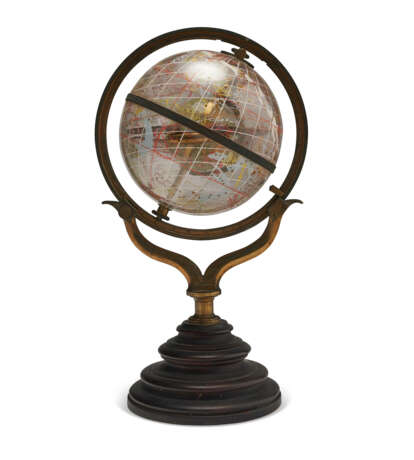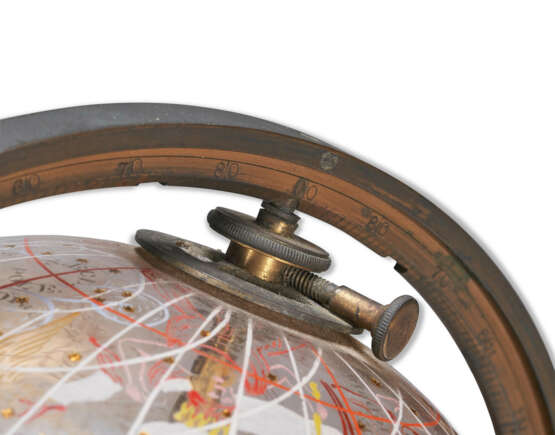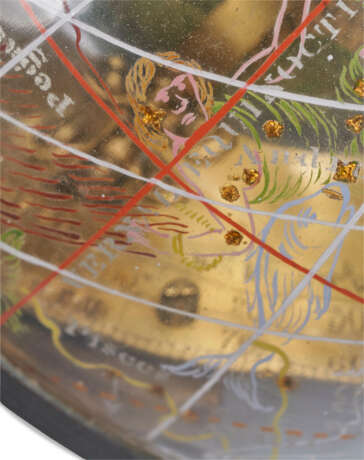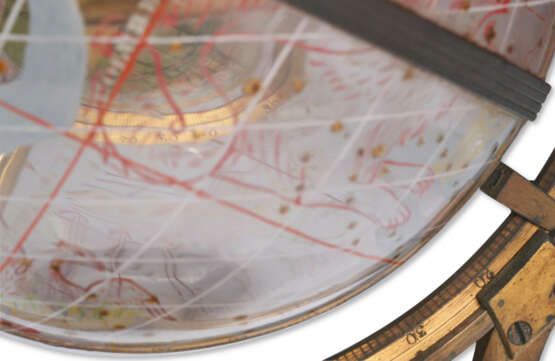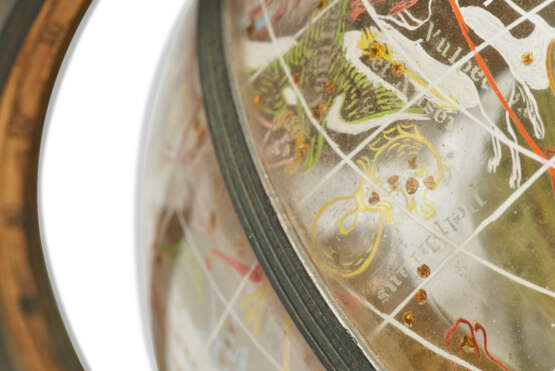ID 1129803
Lot 182 | A concentric celestial and terrestrial globe
Estimate value
$ 20 000 – 30 000
Extremely rare American glass globe. In his application for a patent for this globe, Williamson wrote that he had invented this design "for the elucidation of all the problems now demonstrated by the use of separate globes." For his design he won second prize at the American Institute fair of 1869. Initially retailing for $75, very few of these precious globes have survived, the last at appearance at auction being 2004.
7-inch glass globe, with painted constellations and stars, with internal terrestrial globe made up of twelve hand-colored engraved gores and two polar calottes, no cartouche in the North Pacific [a later? state], the equatorial graduated in degrees, the ecliptic graduated in days of the houses of the Zodiac, the oceans with an analemma, the continents outlined in green, with some nation states colored in green, showing national boundaries in dotted outline, towns, cities, rivers, lakes, and the Great Wall of China, Tasmania labelled VANDIEMENS LAND, South Africa showing Hottentots and Kafferland, held on a brass axis within an unmarked brass meridian circle and a stamped meridian half-circle graduated 90°-0-90°, with a split horizon ring graduated in degrees of amplitude and azimuth, with compass directions, stamped G.C. WESSMAN NEW YORK MAKER, and PATENTED DEC.3.1867 No. 114. Supported in graduated brass meridian ring sitting on brass Y-stand with turned wooden base, 161/2in. tall.
| Artist: | Hugh Williamson (XIX century - ?) |
|---|---|
| Place of origin: | USA |
| Category: | Orrery |
| Artist: | Hugh Williamson (XIX century - ?) |
|---|---|
| Place of origin: | USA |
| Category: | Orrery |
| Address of auction |
CHRISTIE'S 20 Rockefeller Plaza 10020 New York USA | ||||||||||||||
|---|---|---|---|---|---|---|---|---|---|---|---|---|---|---|---|
| Preview |
| ||||||||||||||
| Phone | +1 212 636 2000 | ||||||||||||||
| Fax | +1 212 636 4930 | ||||||||||||||
| Conditions of purchase | Conditions of purchase | ||||||||||||||
| Shipping |
Postal service Courier service pickup by yourself | ||||||||||||||
| Payment methods |
Wire Transfer | ||||||||||||||
| Business hours | Business hours
|
